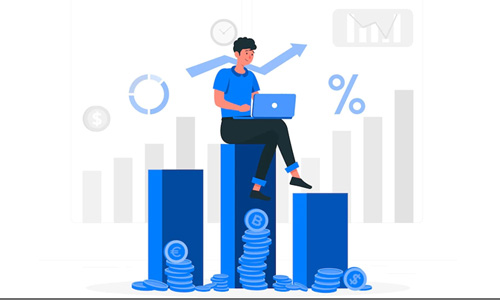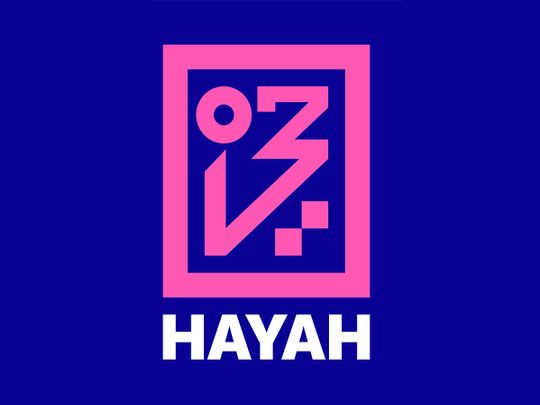Understanding General Provident Fund (GPF)
Invest smart today for a better tomorrow
General Provident Fund (GPF) is a notable financial instrument primarily designed to help government sector employees lead a secure post-retirement life. Acting as a savings and retirement-planning reservoir, GPF enables employees to allocate part of their salaries to the fund each month, which accumulates over time and provides a lump sum upon retirement.
Table of Content
This article will explore the detailed facets of the General Provident Fund, elaborating its features, eligibility criteria, the crucial role it plays in financial planning, and other pertinent aspects, thus offering a comprehensive insight into how GPF operates and why it holds significant value for government employees.
What is the General Provident Fund (GPF)?
The General Provident Fund (GPF) is essentially a savings scheme introduced in 1960, specifically designed for government employees in India. It aims to secure their financial needs, especially after retirement.
Managed by the government, both the employer and the employee make contributions to this fund. Employees are mandated to allocate a specific percentage of their monthly salaries to GPF, and this contribution accrues interest over time at a rate specified by the government.
The scheme, managed by the Department of Pension and Pensioners’ Welfare under the Ministry of Personnel, Public Grievances, and Pensions, is renowned for its multiple advantages such as tax savings, assured returns, and low-risk investments.
Additionally, GPF provides flexibility by allowing employees to make withdrawals for various requirements like marriage, education, and medical emergencies. Thus, it is a reliable and versatile financial resource for government employees.
Key Features of General Provident Fund
As mentioned earlier, the General Provident Fund (GPF) is known for its user-friendly features, specifically tailored for government employees to enhance their savings experience. It offers an array of benefits, ensuring not just a secure financial future post-retirement, but also providing financial assistance during pressing needs.
Here’s a closer look at the distinctive features of GPF -
- Universal Membership: All government employees are eligible to join GPF by contributing a specified portion of their salary to the GPF account.
- Nominee Assignment: On joining, members are required to nominate a family member who is entitled to receive the total amount saved in the GPF account, without needing any documentary proof for withdrawal.
- Prompt Payouts: Upon retirement, the accumulated amount is swiftly released and transferred on the employee’s last working day. This eliminates the requirement for submitting an application for the final payment.
- Additional Amount to Nominee: In unfortunate events of a subscriber’s demise, the nominee receives an additional amount equal to the average 3-year balance in the GPF account, abiding by the terms and conditions of GPF.
- Maximum Additional Amount: The supplementary amount is capped at INR 60,000, and the nominee can avail of the benefits only if the subscriber had a minimum service period of 5 years at the time of their passing.
Benefits of General Provident Fund (GPF)
GPF stands out as a significant savings and retirement plan primarily for employees of the central government and some state government branches, offering a host of benefits to those who meet the eligibility criteria.
Listed below are some of the key benefits of GPF:
- Exclusive Option: The benefit of GPF is extendable to those who haven’t chosen any other provident fund schemes provided either by the government or any other organisation.
- Inclusion of Temporary Employees: GPF is accessible to a wide range of government servants. Even temporary employees, after completing one year of uninterrupted service, can take advantage of this scheme.
- Secure Financial Future: It acts as a financial security net, providing a dependable source of income post-retirement and ensuring peace of mind for the future.
- Guaranteed Returns: The predetermined interest rate on contributions ensures guaranteed returns, making it a stable and risk-free investment option.
- Emergency Fund Access: GPF provides the flexibility to withdraw funds in times of emergency, providing financial support when needed most.
- Encouragement to Save: Regular contributions to GPF encourage a disciplined savings habit, promoting overall financial well-being and stability.
Interest Rate of General Provident Fund
The interest rate for the General Provident Fund (GPF) is set and evaluated each year by the government. For the fiscal year 2023-2024, the current interest rate stands at 7.1%. The interest is computed annually, and, once calculated, is added to the employee’s GPF account when the financial year concludes. This ensures that the employees' savings grow steadily over time, offering them additional financial security and benefits.
How Does the General Provident Fund Work?
The GPF operates on a straightforward and efficient mechanism, allowing government employees to save a part of their earnings for the future. This fund acts as a stable financial base and offers security and benefits to the employees throughout their service and beyond.
Here are some points to understand the functioning of the General Provident Fund -
- Opening an Account: Upon joining, employees are required to open a GPF account with their employer to start their contributions.
- Monthly Deductions: A specific percentage of the employee’s salary is deducted every month and directed into the GPF account.
- Deduction Rate: Currently, the deductions are set at 6% of the employee’s basic salary, with a minimum limit of INR 500 per month.
- Voluntary Increase: Employees have the flexibility to increase the amount of their GPF deductions voluntarily.
- Interest Accrual: The deposited amount accrues interest, with the rate being determined annually by the government, adding to the overall growth of the savings.
- Loan Facility: Employees have the option to borrow against their GPF account, subject to specific conditions.
- Transfer or Withdrawal: If an employee moves to another government department or resigns, they have the option to either withdraw the accumulated GPF balance or transfer it to their new employer.
- Contributions Management: Employees can manage their contributions, opting to increase their savings as per their financial plans and needs.
Eligibility for General Provident Fund (GPF)
The General Provident Fund primarily extends its benefits to employees within the central and certain state governments, but there are specific eligibility criteria that must be met.
| Criteria | Eligibility |
|---|---|
| Employment Sector | Central and certain state government employees |
| Exclusivity | Not enrolled in any other provident fund schemes |
| Deputation Status | Not on deputation outside India |
| Service Duration (Temporary Employees) | Completed one year of continuous service |
Maturity and Withdrawal Process for GPF
Knowing how and when one can access the funds is crucial for effective financial planning and management. Mentioned below are the maturity and withdrawal processes for GPF -
Maturity Process
The maturity of a GPF account occurs when a government employee either retires or reaches retirement age, marking the completion of their service tenure.
Upon maturity, employees have the choice to either withdraw the entire balance accumulated in their GPF account or opt to receive it as a monthly pension, allowing them flexibility in managing their post-retirement finances.
If an employee unfortunately passes away, the remaining balance in the GPF account is transferred to the nominee or the legal heir, which ensures the financial well-being of the employee's dependents.
Withdrawal Process
Employees can access funds from their GPF account under specific conditions, such as after completing 10 years of service or if they have 10 years remaining until their retirement date. These withdrawals are permissible if the employee has been in continuous government service.
If an employee decides to resign, they can withdraw the entire GPF balance, irrespective of the length of their service tenure.
This flexibility in withdrawal options provides employees with financial support in varying circumstances — whether they continue in service, opt for early resignation, or reach retirement.
How to Open a GPF Account?
Opening a General Provident Fund (GPF) account is a straightforward process. It requires employees to submit an application along with some essential documents to their employer. Once the account is active, a part of the employee’s salary is routinely deposited into this account, allowing them to build savings over time.
To open a GPF account:
- Submission of Application: Employees are required to submit an application form to their respective employers. This form should be accompanied by copies of required documents such as the appointment letter, bank passbook, and PAN card.
- Approval and Account Activation: Once the employer reviews and approves the application, the GPF account is initiated for the employee. Following the activation, a predetermined percentage of the employee’s salary (typically 6% of their basic pay) is deducted each month and credited to the GPF account.
- Monitoring the Account: Employees can keep a check on their GPF balance and observe the transactions by coordinating with their employer’s finance department. This helps them track their savings growth and manage their funds efficiently.
Frequently Asked Questions
Ans: The General Provident Fund is a savings and retirement benefit scheme for government employees in India. It is designed to provide financial stability and support to government employees after retirement. Both the employee and the government contribute to this fund.
Ans: Central government employees as well as certain state government employees are eligible for GPF. Temporary employees can also utilise GPF after one year of continuous service. However, employees who are on deputation outside India or have opted for any other provident fund scheme are not eligible.
Ans: The interest on GPF is calculated annually and is credited to the employee's GPF account at the end of each financial year. The government sets the interest rate, and for the year 2023-2024, it is 7.1%.
Ans: Yes, employees can withdraw funds from their GPF account for specific reasons after completing 10 years of service or if they have 10 years left until their retirement date. Employees who resign from the job can also withdraw their GPF balance regardless of their service tenure.
Ans: To open a GPF account, you need to submit an application form along with necessary documents like your appointment letter, PAN card, and bank passbook to your employer. After approval from your employer, your GPF account will be opened. After this, a fixed percentage of your salary will be deducted monthly and deposited into this account.
More From Investment
- Recents Articles
- Popular Articles

























.jpg)

.jpg)
.jpg)

.jpg)
























